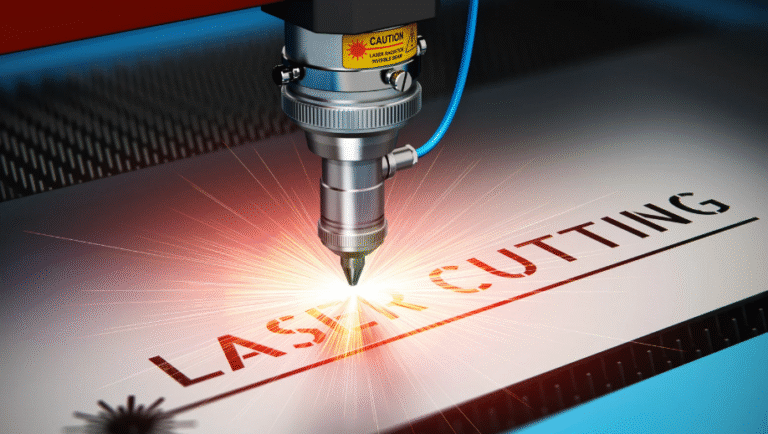Why Prior Art Search is the Foundation of Strong Patent Protection
Every groundbreaking invention faces one unavoidable test before it can be protected: proving that it is truly new. In patent law, novelty is not assumed, it is demonstrated through evidence. The process that provides this evidence is the prior art search.
A prior art search is far more than a database query. It is a technical and analytical process that determines whether an invention can survive the scrutiny of patent examination, litigation, or market entry. It reveals what has been disclosed before and identifies the precise boundary between known knowledge and genuine innovation. When executed by specialists who understand both technology and law, it becomes the foundation on which strong, defensible patents are built.
Understanding Prior Art and Its Legal Significance
“Prior art” refers to any publicly available information that existed before the filing date of a patent application. This includes granted patents, published applications, research papers, product documentation, technical manuals, websites, or even videos. In short, if it was publicly disclosed anywhere in the world, it counts.
Patent examiners rely on prior art to determine whether an invention meets two fundamental requirements: novelty and inventive step. If a similar disclosure already exists, the application can be rejected. If the invention appears to be an obvious improvement over known technologies, it can still fail to qualify. The prior art search therefore becomes the first and most decisive step in safeguarding innovation.
The Technical Architecture of a Prior Art Search
Behind every comprehensive prior art search is a structured methodology that combines computational tools, human analysis, and domain expertise.
Step 1: Defining the Invention
The process begins by breaking down the invention into its core technical components. Analysts identify each element of novelty, function, and purpose. This definition guides the entire search by clarifying which aspects must be validated and which can be differentiated.
Step 2: Identifying Search Parameters
Once the invention is defined, experts map it to international patent classification systems such as IPC or CPC codes. These classifications provide a structured way to locate related technologies across millions of patents. In parallel, keyword matrices are created to cover every possible variation, synonym, or abbreviation that could describe the same concept.
Step 3: Conducting Multi-Source Searches
A credible prior art search draws from several types of repositories:
- Patent Databases: Global offices such as USPTO, EPO, and WIPO, along with regional platforms.
- Non-Patent Literature: Academic journals, conference papers, dissertations, standards, and whitepapers.
- Product Documentation: Manuals, datasheets, and promotional material that reveal functional details.
- Citation Networks: Backward and forward citations that map the technological lineage of ideas.
Each data source contributes a different perspective, ensuring no potential disclosure is overlooked.
Step 4: Combining Algorithmic and Manual Analysis
Modern prior art searches employ a hybrid approach. AI-driven search engines perform large-scale data mining and semantic analysis, identifying conceptually similar documents even when terminology differs. Human analysts then validate these findings, assess their relevance, and interpret their legal significance. The combination of machine speed and human precision ensures reliability.
Step 5: Comparative Mapping
The retrieved references are systematically compared against the invention’s claim structure. Analysts map claim elements to the corresponding features disclosed in prior art. This process identifies whether the invention is anticipated (fully disclosed) or rendered obvious (partially disclosed). The result is a claim-to-reference matrix that forms the technical foundation for legal evaluation.
How Prior Art Search Strengthens Patent Strategy
The benefits of an effective prior art search extend far beyond initial patent filing. It influences the entire lifecycle of an innovation, from research to litigation.
1. Enabling Accurate Claim Drafting
Without a prior art search, claims are written in isolation, often too broad or overlapping with existing patents. With search insights, attorneys can define claim boundaries precisely, highlighting what is truly new. Well-informed drafting reduces office actions, shortens prosecution time, and enhances the enforceability of the granted patent.
2. Reducing Litigation Vulnerability
In litigation, hidden prior art can become a fatal flaw. Many patents are invalidated when overlooked disclosures surface years after grant. A thorough search performed early prevents such surprises. It ensures that every claim rests on verified novelty and can withstand legal challenges.
3. Supporting R&D Decision-Making
R&D teams gain strategic insight from prior art results. They can identify crowded technology areas and pivot toward white-space opportunities. The process also prevents redundant research, conserving both time and resources while driving innovation toward unclaimed territories.
4. Guiding Freedom-to-Operate Assessments
Before launching a product, companies must confirm they are not infringing existing patents. Prior art search feeds directly into freedom-to-operate analysis, identifying patents that could pose a risk. Early detection allows for design modifications or licensing arrangements before costly disputes arise.
5. Enhancing Portfolio Valuation and Licensing
Investors and licensors assess patent value based on its strength and defensibility. Patents supported by well-documented prior art searches are considered more reliable and command higher valuation. In licensing negotiations, these documents serve as technical evidence of originality and risk mitigation.
The Intersection of Technology and Law
A key strength of the prior art search lies in how it bridges technical understanding and legal application. Search specialists must interpret engineering data through the lens of patent law. They assess not only whether prior art exists, but how it affects novelty and inventive steps as defined by statute.
Patent attorneys then translate these technical findings into claim language, prosecution arguments, or litigation strategy. When technical consultants and legal teams collaborate effectively, they produce patents that are both innovative and resilient. The precision of that partnership often determines whether a patent survives scrutiny in global jurisdictions.
Common Challenges and How Experts Address Them
Despite its importance, prior art search is frequently compromised by methodological errors or resource constraints.
| Challenge | Consequence | Solution |
| Narrow keyword coverage | Misses relevant disclosures using different terminology | Combine Boolean, semantic, and classification-based searches |
| Limited jurisdiction scope | Overlooks foreign prior art | Include international and translated databases |
| Ignoring non-patent literature | Misses technical papers and product data | Integrate non-patent and grey literature |
| Lack of subject expertise | Misinterprets technical relevance | Employ domain experts to validate search results |
| Poor data organization | Inefficient review and reporting | Use structured claim mapping and visual analytics |
| Treating search as one-time | Misses new publications | Update searches regularly during product development |
Addressing these challenges requires both systematic process design and domain-level insight, qualities typically found in specialized consulting firms.
Strategic Applications Beyond Patent Filing
A prior art search delivers lasting value long after a patent is granted. It becomes a key instrument in shaping broader IP and business strategies.
- Litigation Support: Validity and invalidity searches form the core of technical evidence in IP disputes. They provide factual grounds to defend or challenge patents.
- Licensing and Monetization: Prior art documentation increases the credibility and valuation of IP portfolios during negotiations.
- Portfolio Management: Companies can identify underutilized patents or redundant filings, optimizing maintenance costs and improving return on IP investment.
- Competitive Intelligence: Regular search updates provide visibility into competitors’ research directions and help anticipate emerging trends.
By embedding prior art search into continuous IP management, organizations maintain a proactive stance rather than a reactive defense.
The Lumenci Approach
At Lumenci, prior art search is performed with a blend of scientific rigor and legal awareness. Each engagement begins with a deep technical briefing to define the invention accurately. Analysts apply multi-layered search logic across global patent and non-patent databases. Advanced semantic algorithms identify conceptual similarities, while subject-matter experts interpret the results to ensure precision.
Reports are structured for both technical and legal clarity. They include claim-to-reference mapping, relevance scoring, and actionable insights for filing or prosecution strategy. By combining automation with human expertise, Lumenci ensures that every conclusion is defensible under scrutiny from examiners, judges, or opposing counsel.
For over a decade, Lumenci has supported clients across software, telecom, and semiconductor industries. Its analysts have conducted tens of thousands of searches, uncovering critical prior art that shaped patent outcomes and protected billions in R&D investment. The firm’s approach demonstrates how technical truth, when combined with legal precision, leads to stronger, more valuable intellectual property.
Conclusion
A patent is only as strong as the evidence supporting it. The prior art search provides that evidence by verifying novelty, guiding claim strategy, and mitigating future risk. It transforms uncertainty into factual clarity, allowing innovators to move forward with confidence.
In today’s crowded technological landscape, where millions of patents are filed each year, skipping a comprehensive search is no longer an option. For companies that value their innovation, it is an essential investment in protection and long-term success.
By turning data into defensible knowledge, the prior art search ensures that every granted patent represents true advancement rather than repetition. It is not merely the beginning of the patent process; it is the foundation upon which lasting intellectual property strength is built.






